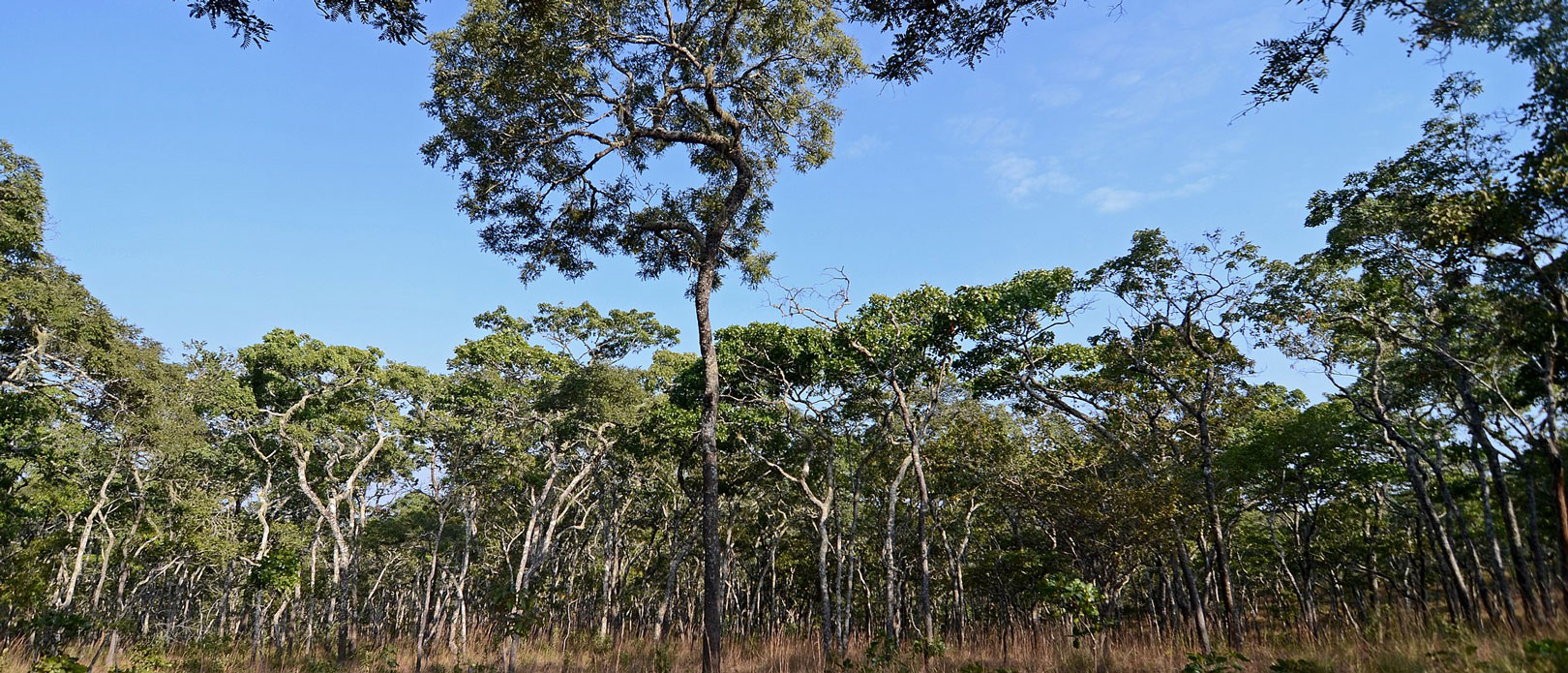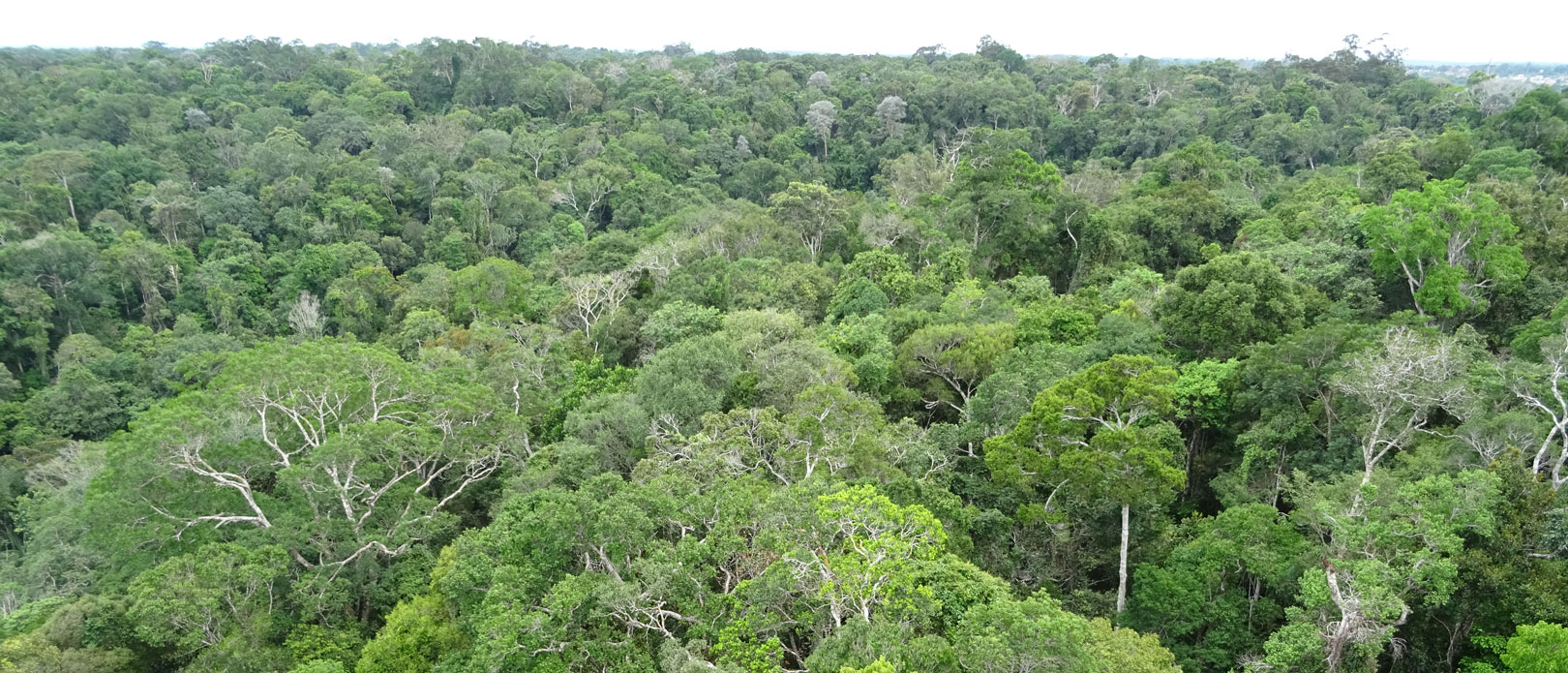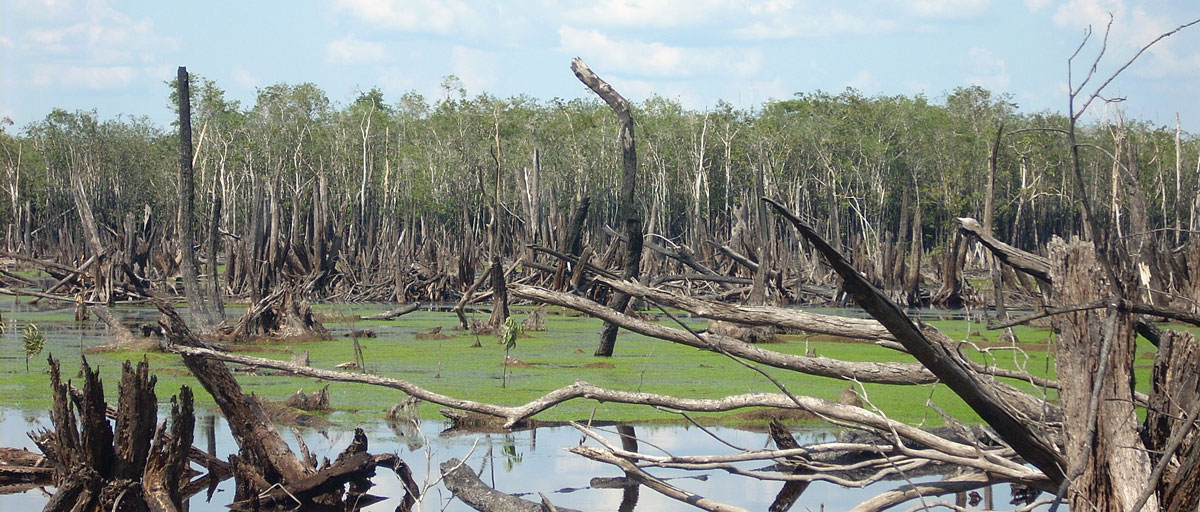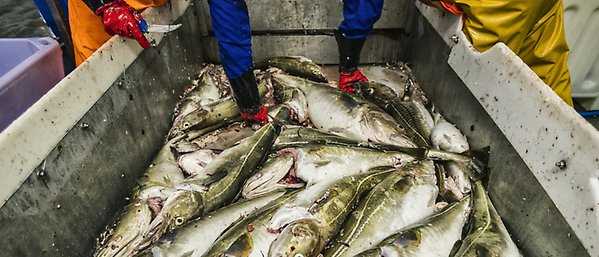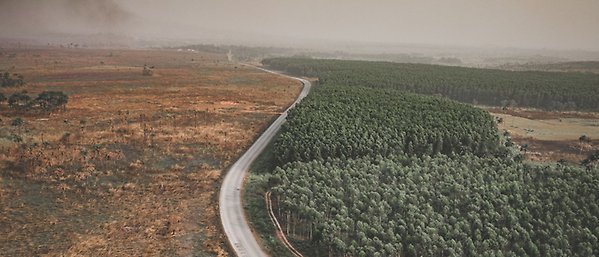Bildtext får vara max två rader text. Hela texten ska högerjusteras om den bara ska innehålla fotobyline! Photo: B. Christensen/Azote
RAINFOREST AND MOISTURE
The ability to deal with drought is crucial for the survival of rainforests
- Rainforests have strategies to maintain their ecological structures under different rainfall seasonality
- This study analyses potential transitions from forests to savanna in South America and Africa
- Rainforests of South America and Africa both operate within close margins of their capacity to store and utilize moisture below the surface
Study identifies thresholds for when rainforests in South America and Africa transition into savannas
TIGHT THRESHOLDS: Rainforests are very sensitive to extended periods of drought. If rainfall drops below a certain threshold, areas may shift into a savanna state.
What is often missed however, is their strategies to maintain their ecological structures under different rainfall seasonality.
Limits to moisture storage
In a study published in Environmental Research Letters, centre PhD student Chandrakant Singh, centre colleagues Lan Wang-Erlandsson and Ingo Fetzer, together with Johan Rockström from the Potsdam Institute for Climate Impact Research and Ruud van der Ent from the Delft University of Technology, analyse potential transitions from forests to savanna in South America and Africa.
They found that transitions within the rainforests of South America and Africa both operate within the close margins of their capacity to store and utilize moisture below the surface.
Subsoil moisture accessible to vegetation during the dry season is not only defined by the amount of rain falling during the wet season, but also by how that moisture is stored and accessed by the vegetation.
Plants increase their storage capacity by expanding their roots, thus accessing more subsoil storage for the coming dry season. However, there is a limit to how much moisture forests are able to store, beyond which savanna transition is imminent.
The study found that, for South America, the threshold of forest-savanna transition occurs around the storage capacity of 550-750 mm while African rainforests it is 400-600 mm.
The insights from this study are useful for improved understanding of how rainforests adapt and cope with increasingly frequent droughts and changes in rainfall.
Chandrakant Singh, lead author
Multiple coping strategies
By studying the relationship between above-ground canopy cover and the below-ground moisture storage capacity, Singh and his colleagues identified four classes of drought coping strategies:
- Lowly water-stressed forest: high tree cover, high monthly rainfall, little need to implement any drought coping strategy.
- Moderately water-stressed forest: high tree cover, but lower annual rainfall than lowly water-stressed forest. Rainfall seasonality causes higher monthly evaporation than rainfall in dry season. Invests in more lateral and deeper roots to buffer the water deficit.
- High water-stressed forest: comparatively fewer trees than moderately water-stressed forests, overall lower annual rainfall. Extensive leaf shedding to significantly reduce water loss. However, highly susceptible to forest-savanna transitions due to vulnerability to forest fires and hydraulic failures. Maximizes storage capacity, while reducing moisture loss.
- Savanna-grassland regime: little tree cover, lower annual rainfall and evaporation compared to other classes. Discontinued tree cover and grass abundance increase risks for fires. The savanna trees, though have deeper roots, maintain major root biomass near the surface to allow for competitiveness among grass species for moisture uptake.
Singh and his co-authors believe their study is important, as certain areas in the rainforests continue to receive less rainfall:
“The insights from this study are useful for improved understanding of how rainforests adapt and cope with increasingly frequent droughts and changes in rainfall.”
Video: Chandrakant Singh explains why the central insights from this study:
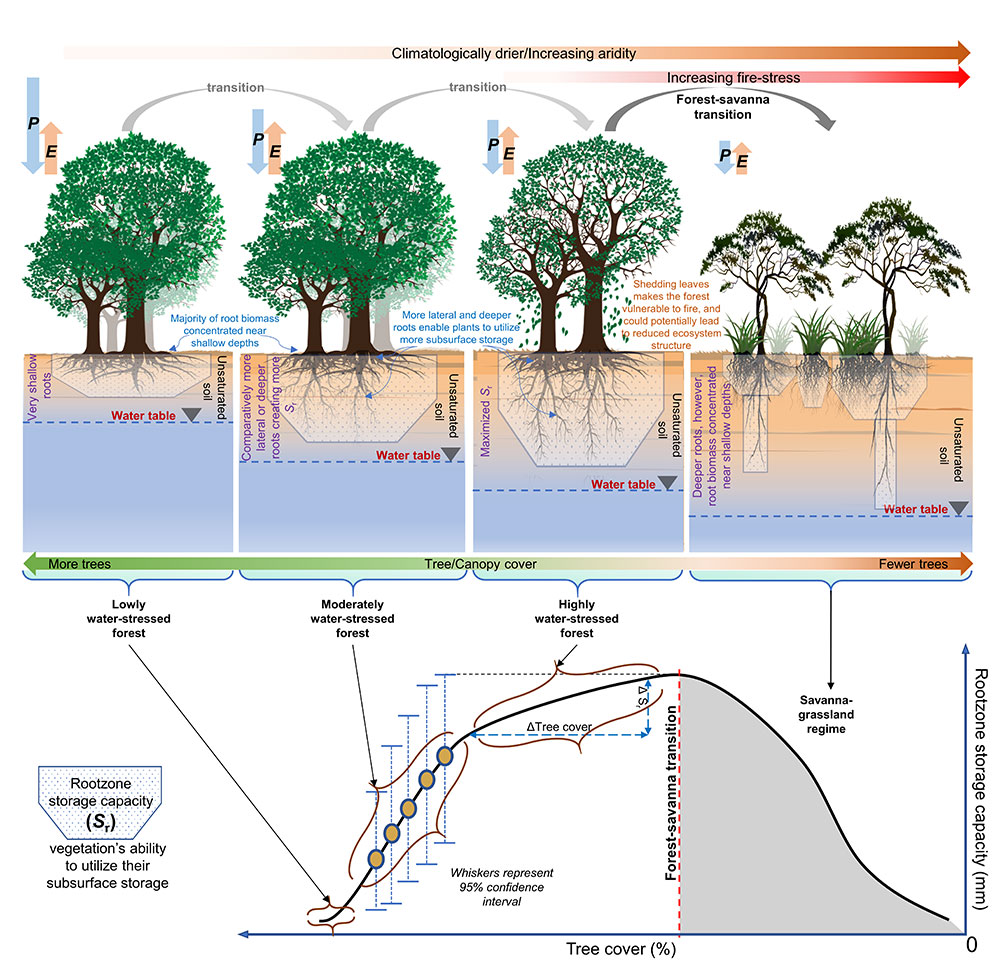
Forest ecosystem adaptation and transition under different climatic regimes (wet to dry) analyzed using the storage capacity and canopy/tree cover. The relative magnitude of rainfall and total evaporation is defined as P and E, respectively. The generalized trend of change in rootzone storage capacity and tree cover from the transects are used to define the line plot below. Click on illustration to access scientific study.
Podcast: While all eyes are on COVID-19, the Amazon forest is burning
Methodology
Daily precipitation was obtained from measurements of the Climate Hazards Group InfraRed Precipitation with Station data at 0.25° resolution for the years 2001-2012. The researchers computed equally-weighted ensemble evaporation to minimize any potential bias. Remotely-sensed MOD44B (Version 6) annual tree cover (TC) data at 250 m resolution was used to analyze the forest-savanna transitions. Rootzone storage capacity (Sr) is the maximum amount of soil moisture that can be accessed by vegetation for transpiration. Plants can increase Sr by expanding their roots in the soil laterally as well as vertically.
The researchers chose six representative transects following the longest possible transition line from the densest part of the rainforests all the way into the savannas and grasslands.
To reduce any local signal noise and regional spatial heterogeneities, we applied a second-order polynomial based on the Savitzky–Golay smoothing technique over a window of seven grid cells along the transects. We classified the drought coping strategies of the ecosystem based on the transitions along the transects, defined using states and trends therein of empirical and statistical proxies.
Singh, C., Wang-Erlandsson, L., Fetzer, I., Rockström, J., van der Ent, R. 2020. Rootzone storage capacity reveals drought coping strategies along rainforest-savanna transitions. Environmental Research Letters, DOI: https://doi.org/10.1088/1748-9326/abc377
For more information about the study, contact Chandrakant Singh:
